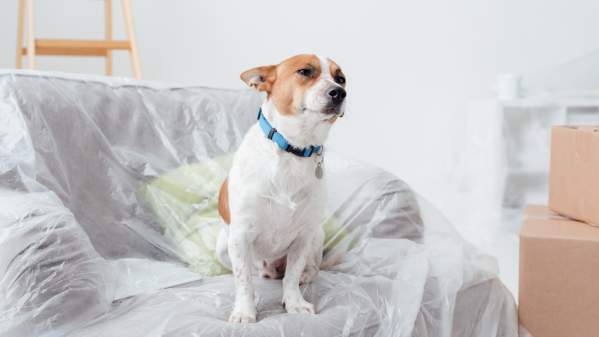If you follow The Real Housewives of Beverly Hills, you’re likely aware of the recent dog-related drama that kicked off season 9 of the reality show.
If not, let’s bring you up to speed: Dorit Kemsley took in a rescue dog named Lucy Lucy Apple Juice from Lisa Vanderpump's rescue organization, Vanderpump Dog Center. Lucy allegedly bit Dorit’s children, so she gave the dog to another family, who ultimately decided they couldn’t keep Lucy either and gave her to a shelter.
Lisa found out, and à la Real Housewives style, drama ensued. Lisa started a very public feud with Dorit for not following the Vanderpump Dog Center's guidelines for rehoming one of their rescues.
Drama aside, there are some important lessons fans and dog lovers alike can learn from the situation.
What Went Wrong When Dorit Rehomed Her Dog?
While Dorit claims she was simply trying to keep her family safe and ensure that the dog was well-cared for, giving the dog to another family without informing the rescue or getting their help was against Vanderpump’s rules.
Vanderpump Dog Center makes a valiant effort to ensure their dogs go to the right homes to keep them safe and prevent them from ending up in another shelter. Vanderpump’s organization has strict rules that go along with adoption — including guidelines about what to do if you decide a dog is not right for you.
The Basic Rules Of Dog Adoption
Turns out, Vanderpump’s rules are not out of the ordinary. Most pet rescue organizations have requirements you must agree to before you can adopt a pup and take them home.
A typical dog adoption process includes:
Being interviewed: The shelter or dog rescue organization will likely want to see what you’re like and if you’re a good fit.
Meeting your pet: Make sure the dog is the size, condition, breed, and sex you set out to adopt.
Filling out paperwork: You'll need to fill out an application that includes information about your home to help the organization get a better sense of your lifestyle. You'll also sign an agreement stating that you’ll abide by any rules set by the adoption agency. These rules tend to include guidelines about what to do if you ultimately decide to rehome the pet.
Taking your new fur baby home: Once you've signed on the dotted line and paid any necessary adoption fees, it’s time to take your pet home! You can start getting to know your new furry family member and determine if it’s an ideal fit for your family.
What To Do If You Need To Rehome Your Pup
Rehoming happens. According to the American Society for the Prevention of Cruelty to Animals (ASPCA), approximately 1 million households give up their dog or cat each year. Common reasons for rehoming include issues with housing, personal health, pet health or behavior, and cost of pet care.
Don’t be like Dorit — if you need to rehome your pet, follow these steps to make sure you do it right:
Follow the rules of the rescue. First and foremost, be sure to check the paperwork you signed with the rescue and follow any rehoming guidelines they’ve laid out, as they may prefer to rehome the dog for you.
Keep your canine at home. If you are rehoming on your own, try to keep your pet until you can find them a new home. In the meantime, your house is probably the safest, most comfortable place for the pup.
Ask around. Check with friends, family members, and neighbors to see if there's a trusted, local home you can transfer your pet to.
Rely on a rehoming tool. Try online rehoming tools to connect with someone looking for a pet, like the ASPCA's Rehoming Services.
"Because there are so many variables to be considered about placement, following rules of the rescue if you decide to re-home is vital to ensure the dog ends up in the correct environment,” says Sarah Dietrich, who works with ALIVE Rescue Memphis in Tennessee. “Many rescues will actually take a dog back if the person or family decides they can no longer keep it.”
And for good reason. “If a dog is re-homed without consideration for its or the new home’s needs, they often end up in shelters with high rates of euthanasia — the very thing rescues are working towards decreasing," adds Dietrich.
The good news? This process is working. A study published in February 2019 in the Journal of American Veterinary Medical Association found that fewer rescue animals undergo euthanasia year over year.
Dog Adoption Is A Positive Thing
When considering whether or not you want to get a dog, don't shy away from the adoption process just because it has a lot of rules to follow and paperwork to fill out. Remember: Most organizations are just trying to keep dogs and potential owners safe. By going about the process the right way, you can make sure you don't end up with a dog you'll want to rehome, and have a furry friend to love and take care of for many years to come.
